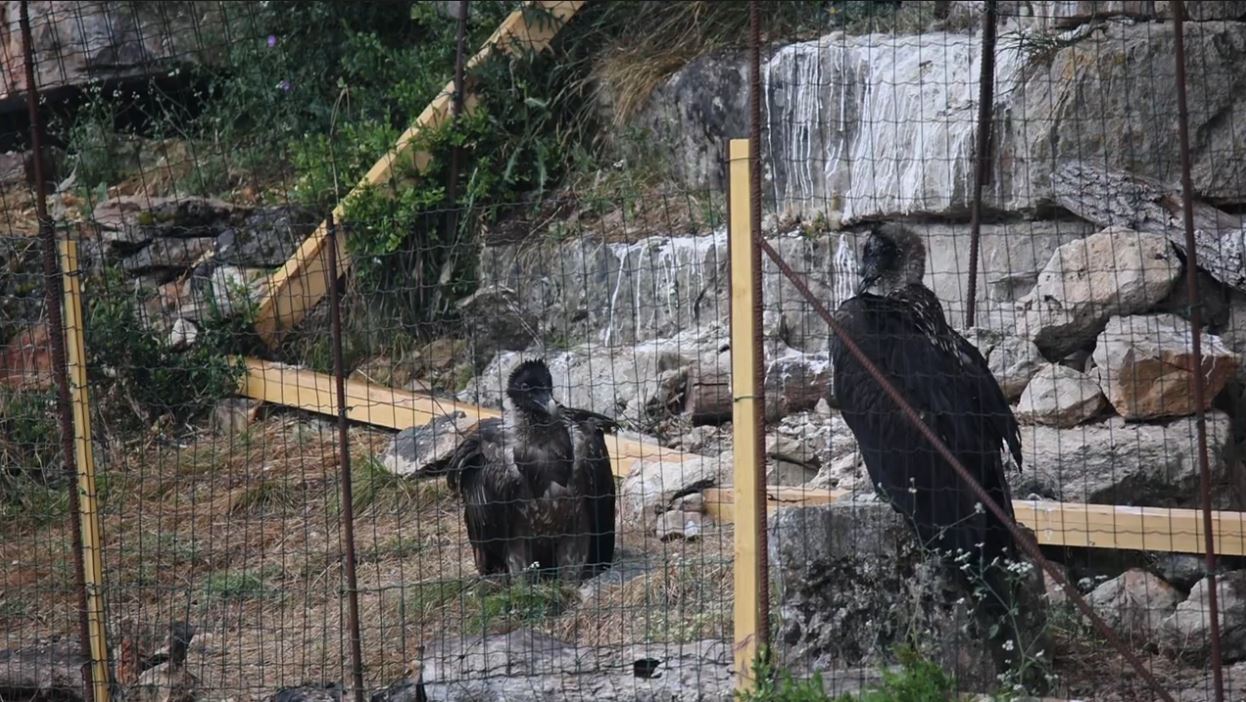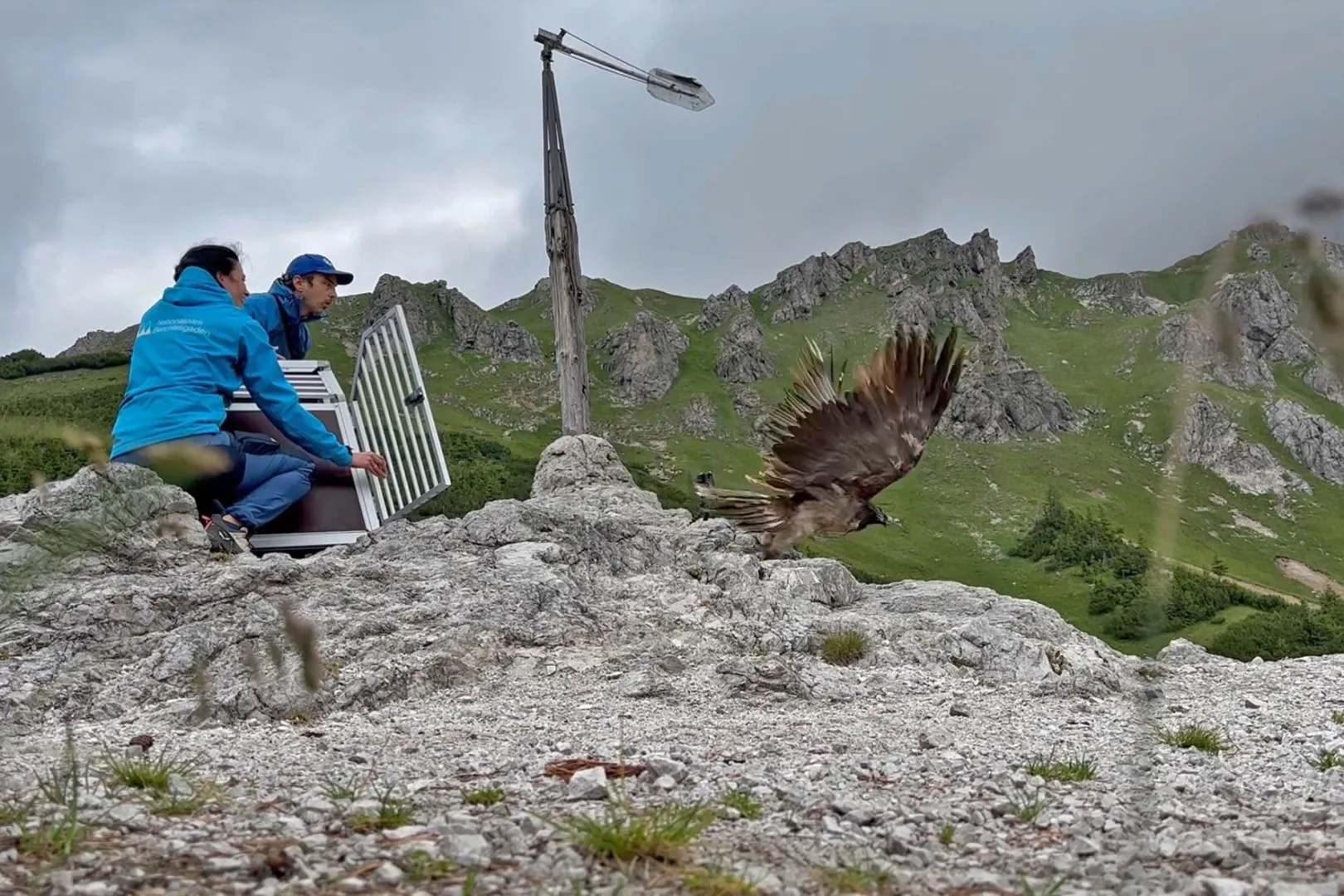
The 2018 bearded vulture release season has seen 13 captive-bred young released from Andalucia and the Maestrazgo regions in Spain, to the Baronnies in the French Pre-alps, and on Sunday 17 June it culminated in the release of two young bearded vultures in the Swiss Federal Wildlife Refuge Huetstock near Melchsee-Frutt.
Meet Finja and Fredueli
These two young bearded vultures, a male and a female, Fredueli and Finja, were captive bred in the Valcallent breeding centre, one of the specialised breeding centres that make up the Bearded Vulture Captive Breeding Network, which is coordinated by us at the Vulture Conservation Foundation (VCF), and is at the base of all the successful reintroduction projects the VCF is involved with across Europe.
After making the long journey from Spain the two young birds were greeted by a crowd of more than 250 vulture fans who had assembled in the Tannalp to witness their release and meet the youngsters who will become part of a growing Swiss population of these beautiful vultures.
Bearded Vultures in Switzerland
The bearded vulture population in Switzerland is growing from a historically low population size. Last year, 14 of the total of 31 bearded vultures hatched in wild nests across the Alps flew out of Switzerland, and every year since 2015, we here at the VCF have worked together with the Swiss ProBartgeier Foundation to release birds into Central Switzerland.

In the Alps the wild population of bearded vultures are breeding well since the Alps Reintroduction project began in 1986 with a sustainable demographic growth and the reintroductions could stop, however, the genetic composition of the Alpine reintroduced population is still less diverse than what could be expected from a population of this size (approximately 50 breeding pairs). All the birds reintroduced originated from a small number of captive founding genetic lines, the releases in the Alps are still continuing mostly to boost the genetic diversity – individuals released there are hand-picked to include rare genetic lines. As survival is greatest in Switzerland, these rarer genetic types are released into the Swiss Alps. While the wild population is growing in the mountains of Grisons and Valais, bearded vultures are less common in Central Switzerland, so the recent release sites have been there..
So far, seven bearded vultures have been released near Melchsee-Frutt:, three in 2015 and two each in 2016 and 2017. Unfortunately, two of the seven birds died: The young vulture Senza fell out of a rock shortly after release and Alois died most likely as a result of a collision with a transport cable.
Bearded Vulture Captive Breeding Network
The two young vultures Finja and Fredueli were both from the Valcallent captive breeding centre that is part of the Bearded Vulture Captive Breeding Network which consists of 38 zoos, specialised breeding centres and private collections across Europe. This network monitors the genetic information of the birds to ensure that birds released as part of the reintroduction projects across Europe are genetically diverse. Both Finja and Fredueli are from genetic lines that are not represented in the wild Alpine population of bearded vultures.
We look forward to hearing more about these birds as they fledge and head out into the Alps, thanks to GPS transmitters we will be able to report back on their progress. You can also observe the released birds during the summer months at the information stand of the Foundation ProBartgeier in Melchsee-Frutt.




